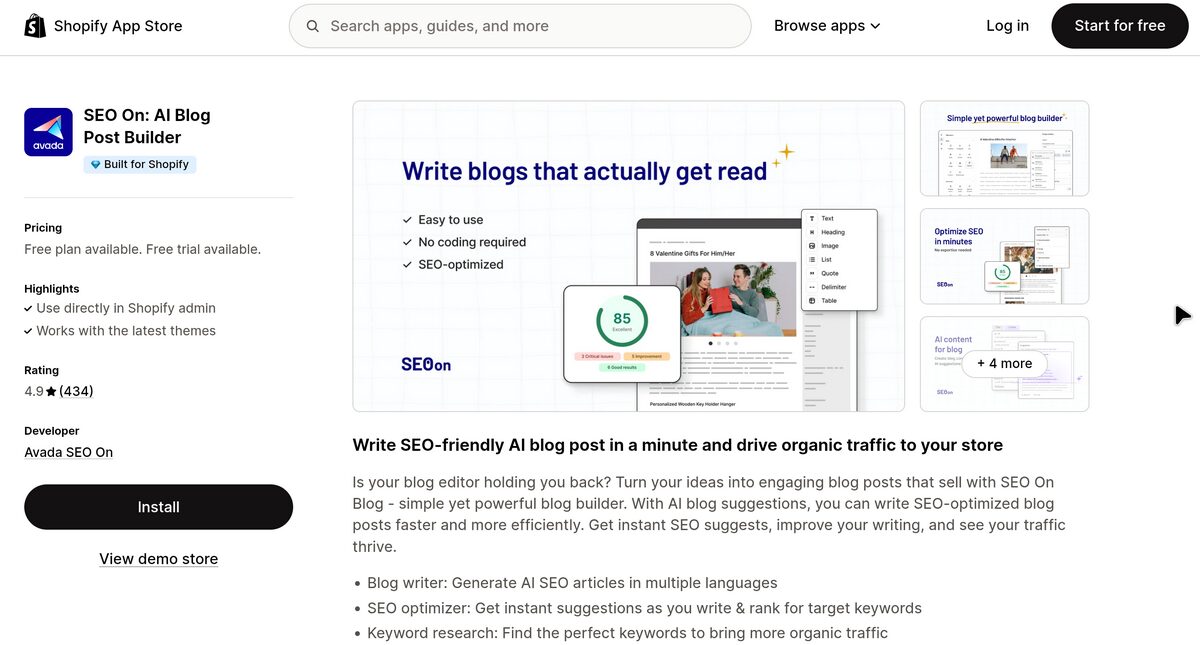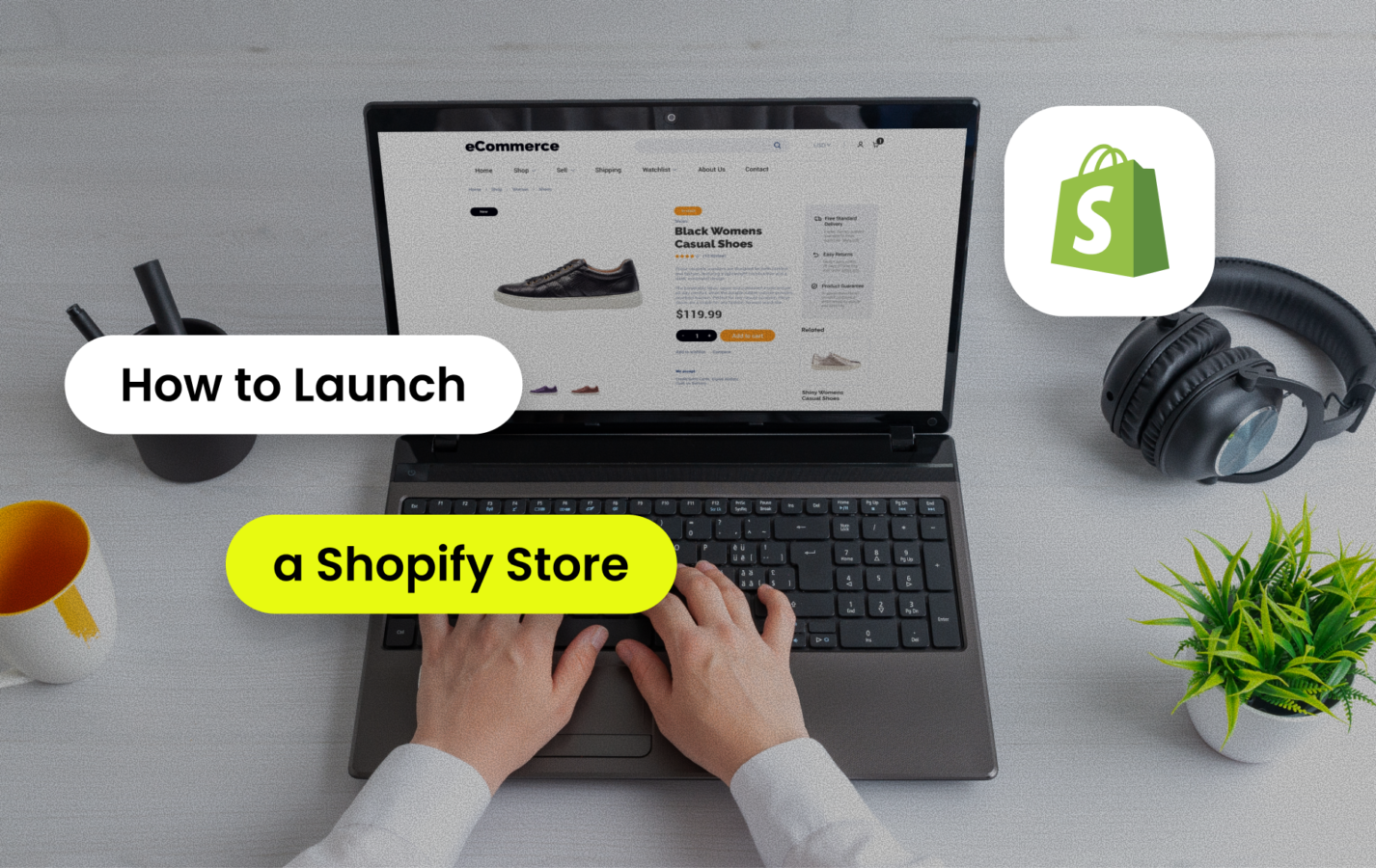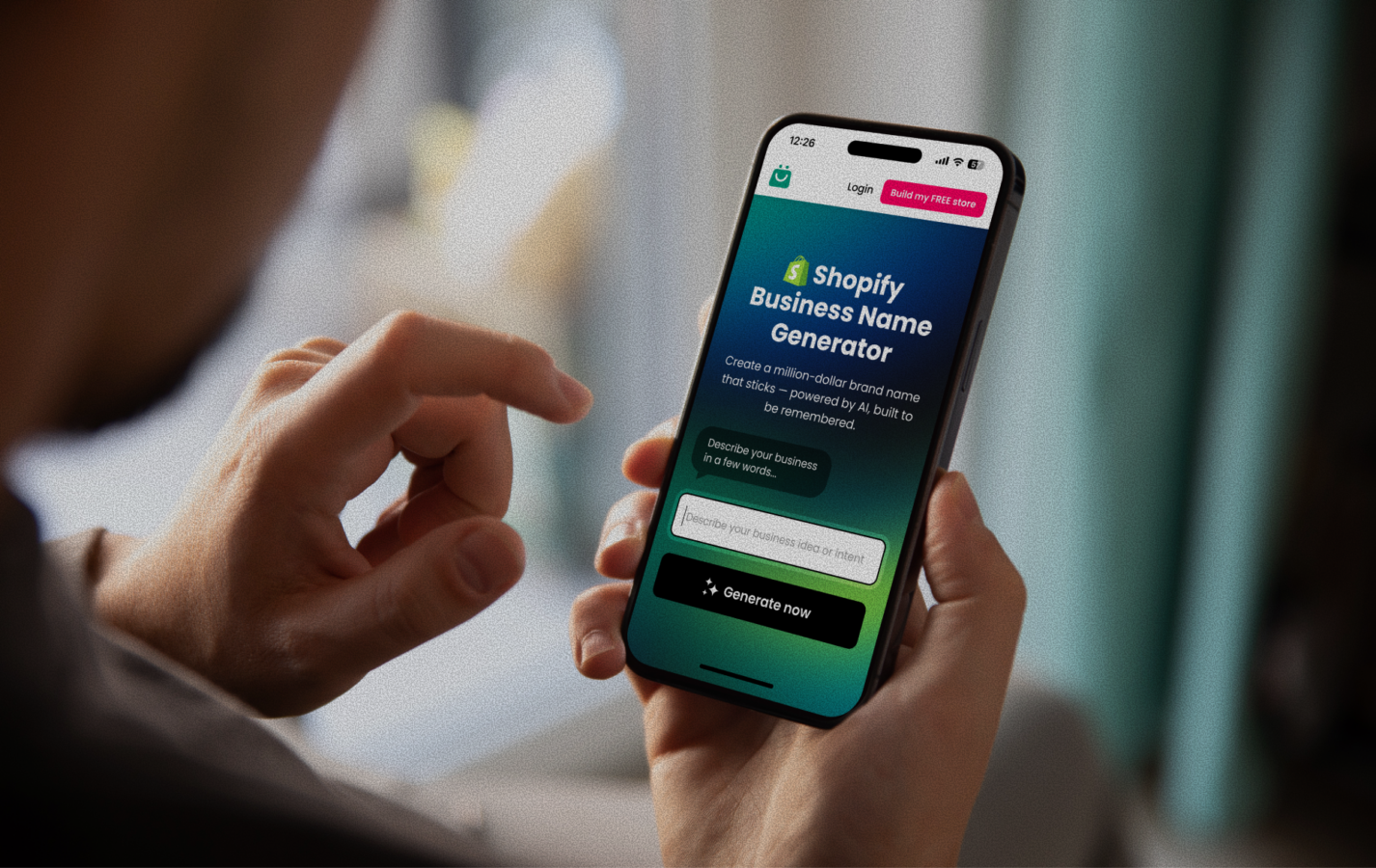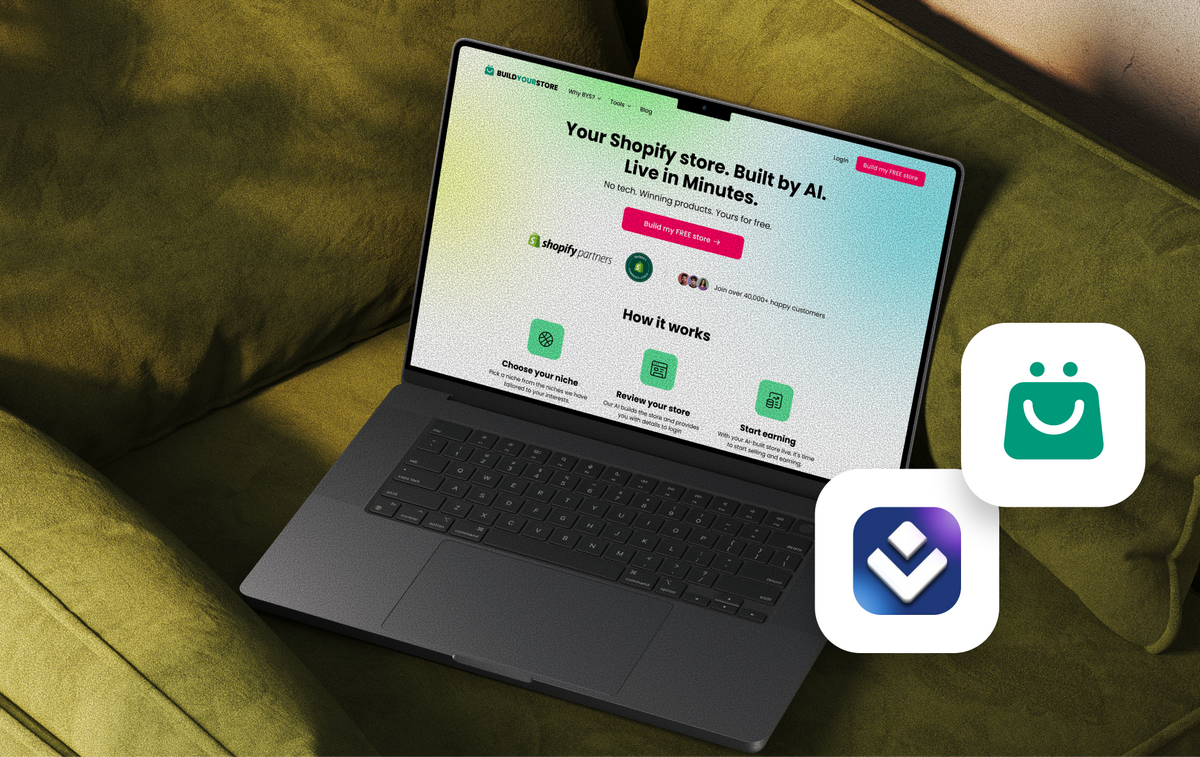AI Built Your Store: Now, Let Content Marketing Drive Sales
So, you’ve used an AI tool (or three) to spin up your Shopify store in record time. The product pages are live, your checkout works, and inventory is synced. But here’s the catch: without traffic, your store is just a digital ghost town. How do you get real buyers—not just bots or casual browsers? That’s where a smart Shopify blogging strategy for AI-built stores steps in.
A blog isn’t just “extra content.” It’s your traffic engine, your brand’s loudspeaker, and your secret conversion funnel. In fact, Straits Research reports that by 2025, more than 80% of marketers use AI in content creation, but the best results happen when AI power meets human editing. Think of your blog as the bridge between “I just found your store” and “I just bought from your store.”
Why Blogs Still Matter Post-Launch
Even though AI built your storefront, humans (and search engines) still crave narrative, expertise, and content that answers questions. This is why blogging is essential:
- Organic Traffic: Every blog post is another searchable doorway into your store. Once indexed by Google, posts can generate free traffic for years.
- SEO Boost: Blogs let you rank for long-tail keywords product listings miss—things like “how to choose a blue widget for small spaces” or “blue widget maintenance tips.”
- Trust & Authority: Shoppers trust brands that teach, explain, and solve problems. A blog lets you tell your “why,” showcase expertise, and build credibility that your sleek AI store alone can’t.
- Content as Funnel: Blogs guide readers step by step (from discovery to checkout) with product mentions, internal links, and lead magnets like discounts or free guides.
Blog Creation: Using SEO AI Tools Like Tapita Or SEO On
When you’re running a store built by AI, you might as well let AI help with its name creation with tools like the Shopify Business Name Generator and the content creation workflow, but always with humans in the loop.
AI accelerates ideation, draft generation, and optimization. SEO modules help pick keyword opportunities you’d miss manually. But AI can’t capture brand voice, nuance, or strategic gaps. Manual polish is mandatory for authenticity.
Let’s review how tools like Tapita AI and SEO On help streamline blog creation.
Tapita AI: SEO Blog Generator + Optimizer (for Shopify)

Tapita AI SEO Blog Builder was designed to generate blog posts directly in Shopify. It offered keyword suggestions, draft creation, and even blog layouts in multiple languages. Although it was removed from the Shopify App Store in March 2025, its approach is worth studying.
✅ Tapita AI Strengths
- Tight integration with Shopify (drafts live in your blog editor)
- Full-stack features (layout + content + SEO)
- Bulk generation and scheduling
❌ Tapita AI Challenges
- Removal from the app store suggests maintenance or support concerns
- AI drafts often need rewriting to match your brand voice
- You’ll want a human review loop to catch factual errors, polish transitions
SEO On: Keyword and on-page AI assistant

SEO On focuses more on guiding than fully automating. It helps discover keywords, refine on-page SEO, and suggest improvements for headings, interlinking, and meta descriptions.
✅ SEO On Strengths
- More control and flexibility (you remain in the driver’s seat)
- Less risk of “robotic sounding” content
- Can complement other writing workflows (e.g. you write draft, SEO On proposes tweaks)
❌ SEO On Challenges
- It may generate suggestions that aren’t actionable or are generic
- You’ll still need to human-edit and validate everything
- Its effectiveness depends on how well its suggestions match your niche / long-tail universe
Workflow: Turning AI Into Blog Fuel
So how do you actually go from “blank page” to a blog that drives traffic? Think of it like a creative loop: AI helps you start fast, and you bring it home with your voice.
1. Start with a smart topic
Fire up SEO On or Tapita (if available) and look for long-tail keywords your products don’t already cover. These are usually framed as questions or “how-to” searches. (Think about what your customers are already asking in DMs or emails.)
2. Let AI sketch the blueprint
Feed that keyword or topic into the tool and let it build you an outline or even a rough draft.
3. Make it sound like you
Rewrite the intro so it feels human, drop in examples from your niche, and cut any fluff.
4. Tweak the SEO details
With the content polished, go back to the AI tool for the technical bits: titles, meta descriptions, internal links, image alt text. These tweaks make your blog easier for real people to navigate.
5. Hit publish and spread the word
Post it on your Shopify blog, then share it everywhere: your social feeds, email list, even link it from related product pages. The more touchpoints, the faster your post gets indexed and clicked.
6. Circle back and improve
After a couple of months, peek at your analytics. Which posts are pulling traffic? Which ones flopped? Update the underperformers with fresher data, stronger hooks, or better keywords.
AI gives you speed, you give it soul. Together, that’s how you launch, learn, and iterate your blog strategy.
Content Ideas That Convert

Now that you’ve got the workflow down, let’s talk about what to actually write. The best blog content does two things at once: it attracts search traffic and it nudges readers closer to buying. You can use, to name a few:
- Product Stories: Don’t just say “here’s what we sell.” Share the origin story, the hidden benefits, or the real problems your product solves.
- Comparisons: Posts like “Product A vs. Product B: Which is right for you?” are gold. They’re SEO-friendly because shoppers literally Google those terms, and they help decision-stage buyers feel confident choosing your product.
- Tutorials & Guides: “How to use [product]” content builds trust and lowers return rates. Think simple, practical, visual.
- Listicles & Trends: “Top 10…” and “Best of 2025…” posts are traffic magnets. They give readers quick value, tap into trend searches, and are easy to refresh each year to keep rankings alive.
- Customer Stories / Case Studies: Nothing beats real voices. Share how customers used your product to solve a problem or improve their life. These posts humanize your brand and act as social proof.
The trick? Mix and match these content types so your blog feels alive: some posts to capture new eyes, others to convince fence-sitters, and a few that remind buyers why they chose you.
Scheduling & Consistency Hacks with AI
The hardest part of blogging is the showing up week after week. Luckily, AI can help you stay consistent without burning out.
Start by batch-generating content ideas. Feed your niche keywords into an AI tool, and you’ll instantly get a month’s worth of blog topics. From there, draft multiple outlines at once, so you’ve always got a head start when it’s time to write. Finally, use AI’s internal linking suggestions to keep your posts connected, making Google (and your readers) stick around longer.
Now, here’s a pro-level hack: build a 30-day content calendar with recurring formats. For example:
- Week 1 ➡️ a “How-To” guide
- Week 2 ➡️ a “Top 10” listicle
- Week 3 ➡️ a product story or customer case study
- Week 4 ➡️ a trends update or comparison post
This rhythm keeps your blog balanced and makes planning way easier. And remember: consistency beats perfection. A good blog published on schedule will always outperform the “perfect” draft that never leaves your Google Docs.
Track Performance and Pivot Smartly
Publishing is only half the job. The real growth comes from tracking what works and adjusting as you go. Thankfully, Shopify and free tools like Google Search Console make this way easier.
Analytics to keep an eye on:
- Organic traffic growth: See which posts are climbing in search rankings. That’s your compounding SEO engine at work.
- Engagement metrics: Time on page and bounce rate tell you if people are actually reading or just bouncing after the headline.
- Conversions from blog CTAs: Did readers click your “Shop Now” button, sign up for your list, or use a discount code from the post? That’s the ultimate proof of impact.
Then, make the pivot: double down on what’s working. If a certain blog type (say, “How-To Guides”) keeps driving sales or traffic, make more of them. If a topic flopped, tweak the angle or retire it.
And don’t let a winning post just sit there. Repurpose it into:
- Social media carousels with bite-sized tips
- Email newsletters linking back to the full post
- Short videos (think TikTok or Reels) summarizing key insights
That way, one blog turns into three or four different content pieces, all feeding traffic back to your store.
Frequently Asked Questions
Do Shopify blogs really help with SEO?
Absolutely. A Shopify blog gives your store the chance to rank for long-tail keywords, questions, and niche topics that product pages usually can’t capture.
Can I automate all blog writing with AI?
AI tools can generate fast drafts, outlines, and SEO-driven suggestions, but they shouldn’t replace human editing. Manual polishing ensures the content reflects your brand’s voice, connects emotionally with readers, and avoids sounding generic.
How often should I post on my Shopify blog?
For most AI-built stores, posting at least 2–4 times per month is ideal. This schedule strikes a balance between quality and consistency, giving Google regular signals while also giving you time to refine each article.
What tools can help me blog faster?
Shopify apps like Tapita AI and SEO On are excellent for speeding up your blogging process. Tapita focuses on generating and optimizing blog content directly inside Shopify, while SEO On helps with keyword strategy, on-page tweaks, and content suggestions. Using them together can help you save hours of work.
How long before I see results from blogging?
Most Shopify stores start to see measurable SEO traction in 3–6 months. This timeline can shrink if you use AI tools to create and publish content consistently since you’ll cover more keywords faster.
Conclusion
AI might have built your Shopify store in record time, but blogs are what turn a store into a brand. A smart Shopify blogging strategy for AI stores helps you grab long-tail search traffic, show authority in your niche, and guide readers toward becoming buyers, all while building trust along the way.
The playbook is simple: launch fast with AI tools, learn from your analytics, and keep iterating with your own voice. Ads can give you quick spikes, but consistent blogging is what compounds into steady, reliable growth.
Start small, stay consistent, and let your blog become the growth engine your AI-built store deserves.
For more insights, check out our blog:









